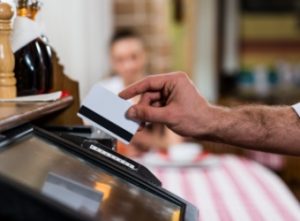By Gabriela Mancero
Nobiembre 2007
It is fair to say that Latin America is still lagging behind compared to other regions in the development of a regulatory framework in this area. However, our regional research also shows that certain additional rules would be necessary or not, depending on the way the Internet and alternative transactions are designed, structured and implemented.
Here is a comparative review of the current situation regarding alternative payment methods in the countries of the region and a list of conclusions derived from the information obtained.
The study does not include systems of credit and debit cards, which are already well established in the region. We will focus on innovative payment methods, which have been launched recently and have not yet been launched, such as payments through alternative devices and using smart card payments (including store cards and cards «contactless»). Given the lack of publications on this issue in the region, we rely extensively on a document published by the Intelligence Unit of The Economist cited throughout the text.
Subscription Technical Alternative Payment Methods
Electronic payment methods have gained importance in Latin America in recent years. This had to do mainly with the modernization and technological innovation of banks and the increase of users of financial entities. Clearing houses or clearinghouses have played an important role in providing security and trust in electronic transactions paper.
Internet has been one of the most dynamic growth channels, and has grown to become the second most important (after ATMs) payment. For example, in Colombia in 2005, 100 percent of total banks offered monetary transactions through Internet. The average number of transactions increased by 338% during the period ranging from 2000 to 2005.
Since then, the still low number of Internet users in Latin America continues to be an obstacle to the massification of electronic transactions in the region. To date, the financial system is starting to focus on increasing the use of mobile devices to the traditional Internet access through computer terminals.
So far, the services offered by banks through electronic banking are (i) review of balances and statements (ii) transfer money between accounts (both within the same bank as between different banks); (Iii) review of direct debits; (Iv) payments television service accounts and service accounts television and public mobile services.
The nearest example to www.paypal.com in Latin America is www.DineroMail.com, which claims to be the first non-banking system to transfer money over the Internet. The system operates in Argentina, Mexico and Chile, where, according to statistical reporting 40,000 monthly transactions are recorded. The way in which the system works is by a deposit made by the person wishing to make payments through the portal. Such deposit may be made through a credit card, through bank account transfers through networks, or through ATMs or payment centers.
Once the money is deposited, the user can make payments online with merchants and even transfer money to anyone with Internet address. When the payor has insufficient funds in its DineroMail account, you can arrange automatic debits from credit card transactions or let remain outstanding even when funds are deposited.
Present below a summary of other current developments in some countries in Latin America:
Argentina
The leadership exercised by the Central Bank of Argentina, accompanied by the willingness of banks to invest in infrastructure, allowing rapid implementation of a modern payment system in Argentina, even in the midst of the economic crisis and the fall of the currency. As a result, the country has electronic payments infrastructure that is as modern as any country in Latin America, although the use of cash remains at high levels, and thousands of companies continue to retain the services of cash management firms.
The government has promoted the use of debit and credit cards by offering tax incentives and to strongly promote the use of payroll cards, but has not acted to discourage the use of checks. On the contrary, he has focused on promoting electronic payment products and checks with cash alternatives, in order to increase participation in the formal economy. Public transport is remarkable Subtepas using cards (https: www.subtecard.com.ar), a prepayment system that allows passengers to use the service by passing the card into the reader with all stations in Buenos Aires .
The company «Personal» launched an electronic ticket (http://www.personal.com.ar/personas/servicios/ticket.htm) to purchase tickets for public entertainment events through an agreement with the Tiketek company, which sends the buyer an electronic image of the barcode ticket to the corresponding event.
Bolivia
In this jurisdiction, payments through mobile media devices are not available. Payments made through internet portals exist, but particularly related to operations through bank portals.
Brazil
In Brazil, the new National Payment System (SPB is regarded as a great success, although not yet fully implemented). Brazil has the highest penetration in the region debit cards. However, the average value of debit card transactions remains low, and the financial authorities have recognized the need to make many improvements to increase efficiency, including discouraging the use of checks and increase interoperability Network ATMs.
In relation to the new payment methods such as through mobile devices, Brazil is a leader in the region. An interesting example ishttp://www.pago.com.br/oi. The service has been launched as a revolutionary payment method that works like a credit card but without using it, only through text messages sent by mobile devices. Transactions are protected by a personal PIN and GSM technology.
The device and are free text message and an annual service fee is paid. It is a credit management scheme through the cell phone company that allows its customers to pay by mobile devices products and services registered establishments. Payments made by customers are compiled in the monthly invoice mobile company issued to them. The outstanding feature of this scheme is that no bank concession or authorization or intervention is required.
Colombia
Significant efforts have been made both by local banks and mobile phone companies in order to encourage alternative methods of payment. Payments through internet portals are well established and bank customers can conduct all kinds of payments (utilities, phone, TV subscriptions, etc.) through such portals.
There are also independent companies dedicated to administer payments to Internet users (eg www.pagosonline.net) but they still rely on financial institutions (banks and clearing houses) that perform the actual transfer of funds from the bank account customer to the appropriate setting.
The same applies to payments from mobile devices. So far, several banks have launched the possibility of making payments through their websites to connect with these portals through such devices. A prominent example is Bancolombia.
The system is also based on GSM technology, whereby the customer gets a PIN number and the portal can be accessed through any mobile or local mobile service provider. They are not available yet direct payments between consumers and traders through mobile devices in Colombia.
Chile
As for Internet payments, the model is similar to that of Colombia. Some companies carried out transactions on the Internet where customers can pay through the network but using their credit cards, meaning that the company is only an intermediary between the merchant and the customer of the bank. The same applies to payments via mobile devices. An important development in Chile is the use of «contactless smart card (contactless smart cards)», which operate by exchanging radio frequency signals with a transponder to transfer information.
It is used in the transportation system of Santiago (http://www.tarjetabip.cl). This has led to an increase in the average speed of vehicles and thus led to a reduction in fuel consumption and pollution, because the time that vehicles are stopped is reduced.
«Several of the largest banks in the country were associated with Telefónica CTC Chile in 2000 to form a company called Smart Card Company (Etisa), which is implementing the necessary infrastructure upgrades. Transbank is also implementing smart cards and has updated about 5,000 of the 35,000 terminals currently held only in November 2004. Etisa predicts that the smart card conversion will be completed in 2007. »
Ecuador
The situation in Ecuador is similar to other jurisdictions where such payments can be made, but only through the portal user bank. Today all banks in Ecuador provide services «virtual bank», with which users can pay utilities, some other services and taxes.
Mexico
Mexico’s banking sector is now firmly established on thanks to a major modernization of the payments infrastructure and the introduction of new products, including smart cards. There have also been substantial progress in promoting the payroll debit cards. Furthermore, the Government has recognized that such cards are mainly used at ATMs, which funds the informal economy are injected, and is addressing the problem.
Virtually all electronic payment operations in Mexico have banks as intermediaries. Banks receive funds from customers and transferred to the target account. The bank provides the technological platform and ensuring all security measures.
The use of electronic payments in Mexico increased by 133% in the first six months of 2006, compared to the same period of 2003.
With regard to payments via mobile devices, the technology has not yet been used in Mexico, but now Motorola is launching the M solution – Wallet, which, as in other Latin American countries, is basically different for the same procedure (ie, access to the website of the bank) channel.
Venezuela
The situation is very similar to that of Mexico, although a smaller number of financial institutions have launched Internet services for payment purposes.
According to the White Paper of The Economist, published in May 2005, no smart card was launched in Venezuela so far and prepaid cards recently began to offer, but still were not widely popular. According to the white paper:
«Some banks offer prepaid electronic cards that can be used to make purchases online, and some have also begun to offer electronic coupons. They replace paper coupons and stamps used by some companies to provide workers with fringe benefits. Vouchers They are used as money, but they are accepted only for the purchase of certain products, such as commodities or gasoline. These cards are not linked to a bank account, so they can be used by anyone.
It is expected that these products introduce new users to the concept of plastic money, which in turn boost confidence in electronic payment systems and increase banking penetration in the country. Prepaid cards for one purpose are also widely used for mobile phones. Income and direct payments are widely used in Venezuela, especially for large payments. The system is limited by the fact that there exists between the national banks a settlement system. Seven large banks have created a private network, which allows direct transfer between accounts holders, but transfers outside of this system take 48 hours. «


